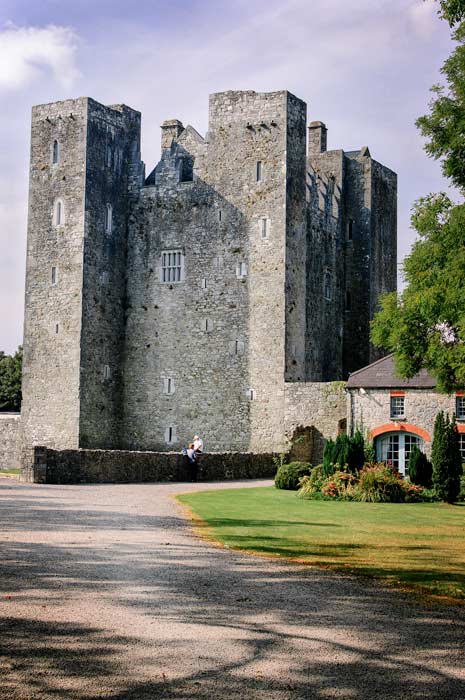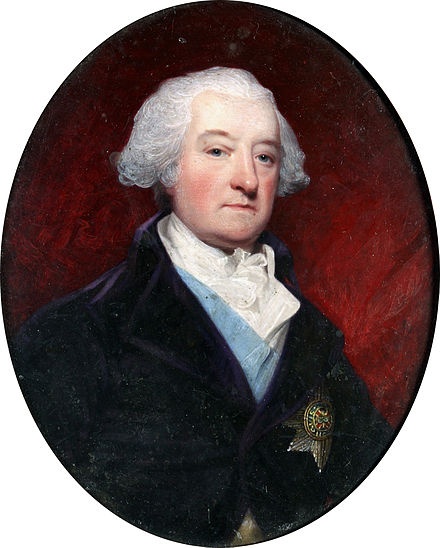Pauline Roche (1835 -1894) has been part of the story for a while. But I’m becoming increasingly sure that she helps place a lot of things into context. This is one of a series of posts covering her marriage into the Barry family, and her daughter’s marriage into the related Smith-Barrys, and a look at where they all fit into both Irish, and British society.

To recap briefly, she runs away from home in Bristol to Ireland in 1854, aged about eighteen. She takes her uncle, and guardian, John Roche O’Bryen to court, successfully gets her guardianship changed, and within two years of her court case has married into the Barry family. The Barrys, one way or another, trace themselves back to the Norman invasion of Ireland in the 1170’s, and in various ways have managed to hold on to land, and money, or both, since then. Their original seat was Barryscourt Castle, and they were given the land from Cork to Youghal, about 50 sq. km. One of the main tactics for keeping wealth in the family was marrying cousins, or through the use of marriage settlements, so Pauline’s marriage was unusual. Having said that, she was bringing the modern-day equivalent of about £ 7,000,000 to the marriage, which helps.
So Pauline is marrying into a junior branch of an old established Anglo-Irish family. It all tends to point to her having some established pedigree, as well as cold, hard, cash. At the risk of speculating, I think it may well turn out that in Pauline’s case, the cash, as we know, comes from John Roche, who is both her maternal great grandfather, and paternal great-uncle. The pedigree, is more speculative, but here goes. Henry Hewitt O’Bryen, Pauline’s maternal grandfather, is the grandson of Daniel O’Brien (1717-1758).

Daniel O’Brien appears to be either a bastard son of William, the third Earl of Inchiquin, or potentially more likely, the bastard son of Charles O’Brien, William’s second son. Charles is rather curiously listed as died unmarried, rather than d.s.p. (died without issue). In Irish Pedigrees by John O’Hart; 1892, O’Hart lists an otherwise unlisted elsewhere, Donal, a fourth son of William O’Brien. I don’t think we are pushing things too far to consider William O’Brien bringing up his bastard grandson as part of the household. It’s interesting that another grandson of William’s, Murrough O’Brien, the 5th Earl of Inchiquin, and 1st Marquess of Thomond was reputed to have a bastard son Thomas Carter, the composer (1769 – 1800) who lived with him at Taplow Court in Berkshire
The Irish landed gentry had a much more relaxed attitude to illegitimacy than is perhaps now realised. Henry Hewitt O’Bryen and Mary Roche were staying at Fort Richard, in co. Cork when their first three children were born, and John Galwey, who owned Fort Richard, and their probable host, and Henry’s contemporary, fathered seven children illegitimately at Fort Richard, starting in 1814, before finally settling down and marrying fifteen years later. Father O’Connor, the parish priest, wrote ‘Bastard’ next to each of those names.
So, in Pauline Roche’s case, the cash comes from John Roche who “amassed great wealth during the French wars, and built Aghada House“. We know JR was a merchant, but little more. Ireland’s exports were predominately agricultural, with a fair proportion heading across the Atlantic to the West Indies, and West Indian goods returning, so there is a reasonable possibility of part of John Roche’s money being tainted by slave labour, though no actual evidence yet.
The pedigree is rather looser; quite possibly a link to the O’Bryens at Rostellan Castle. The Earls of Inchiquin, who later became the Marquesses of Thomond lived at Rostellan, which is about a mile away from Aghada, where John Roche had built his house in 1808. In a slight curiosity, both families started spelling O”Bryen with a “y” rather than an “i” at about the same time. We’ve considered the possible link to William O’Brien earlier. Henry Hewitt O’Bryen, Pauline’s maternal grandfather, was the son of Laurence O’Brien, and Jane Hewitt. Their marriage settlement refers to Laurence having a malt house, and the Hewitt family were brewers, and distillers. There is no firm evidence to link Jane Hewitt, and Henry Hewitt, her father, directly to the Hewitt brewing and distilling dynasty, but all the signs point in that direction. The Hewitts established a distillery in 1792, and ran it until 1864 when they sold it to the Cork Distillery Company who eventually evolved into Irish Distillers, now part of Pernod Ricard.
So Pauline’s maternal great, great, grandfather seems to be the bastard son of Irish aristocracy, and Old Irish at that. Topped up with strategic marriages that bring in money at each generation. The trustees and witnesses of the marriage settlement are significant. “John Sarsfield of the City of Corke Merchant & Richard Connell of the said City Esq” are the trustees of the settlement, “Francis Goold & Wm Galway, and Richard Townsend of Castle Townsend” are signatories to Laurence O’Brien’s indentures of leases. “Thomas Hardy of the City of Corke Gent & Matthew Thomas Hewitt of Castle Townsend aforesaid Esq.,” are the witnesses to the agreements.
William Henry Barry of Ballyadam, is William Barry, of Rockville’s grandson, and the husband of Pauline Roche. Pauline Roche is Ernest O’Bryen‘s first cousin on her mother’s side. Her mother Jane is John Roche O’Bryen‘s eldest sister. She is also his second cousin on her father’s side, because William Roche, Pauline’s father is their ( Jane and John Roche O’Bryen) first cousin once removed. So Pauline Roche’s children are EAOB’s second cousins on their maternal grandmother’s side, and third cousins on their maternal grandfather’s side. All fabulously complicated…….
Pauline Barry (nee Roche) had died in the autumn of 1894, aged fifty eight,or fifty nine, almost exactly a year before the death of her cousin Mgr. Henry O’Bryen. They were both born in 1835, Pauline was born in Rome, and Mgr. H.H. was born in Montpellier, and they were brought up together in his father/ her uncle’s household.
William and Pauline Barry’s children were: (there is more detail here)
- (Patrick)Henry, born 1862; d. poss 1930, who appears to have been unmarried
- William Gerard; born 1864; d. 1940 in Saint-Jean-de-Luz, unmarried.
- Pauline; prob born 1865 or b.1867 – d. after 1911; unmarried.
- Edith,born probably 1863, but possibly as early as 1861, and possibly as late as 1866. Died 19??
- Mary, born 18?? d. after 1911
- Henrietta, b. 1873/4,unmarried
- Kate. b 1879 unmarried.
Only Edith, and Mary Barry, get married, out of all seven brothers and sisters, . Both Edith’s husbands were Army Surgeons. Mary married into the Smith-Barrys of Ballyedmond. In a slightly curious irony, the Master of the Rolls who sat on Pauline Roche’s case in 1855 ( Sir Thomas Berry Cusack-Smith) married into the Smith Barry family, as did Pauline and William’s daughter Mary, making him( Sir Thomas) and Louisa Cusack-Smith, Mary Barry’s husband Cecil’s great-uncle and aunt. It’s a small, small world…
Edith has three sons with Patrick Hayes, and a son and a daughter with William Babtie.
Mary has two daughters with Cecil Smith-Barry.
Ballyadam House, the family home seems to be large. According to the 1901 Irish census it had 16 rooms, and the out-buildings listed are
- 9 stables
- 1 coach house
- 1 harness room
- 2 cow houses
- 1 calf house
- 2 piggeries
- 1 fowl house
- 1 boiling house
- 1 barn
- 1 potato house
- 2 sheds
A total of 24 outbuildings
In 1901 Pauline Barry is listed as the head of household at Ballyadam, and was living there with her sister (Henrietta) Rose and a servant, and she is also listed as the owner of 2 2-room cottages each with 2 outbuildings. In 1911, both Pauline, and Rose are still living there, and they have been joined by their younger sister Kate, and eldest brother Patrick, who is listed as the head of the household. There are two servants living in the house, and their six year old niece Janet Babtie is living with them as well.
In 1901, Cecil and Mary Smith-Barry were living in a reasonably sized house in Castlemartyr, Cork. They had ten rooms, and a couple of stables, and a coach house. the household comprised of Cecil, and Mary, their five year old daughter Cecily Nina, and a twenty three year old house and parlourmaid, Julia Casey. Ten years later, Mary has moved to a smaller house about ten miles away at Ballynoe, on the outskirts of Cobh. She is forty-five years old, and has been a widow for three years. The house is rented from her late husband’s cousin Lord Barrymore, who seems to own most of the village. Mary seems to be living quietly in the village with her daughters Cecily who is now fifteen, and four year old Edith, and a nineteen year old servant girl.